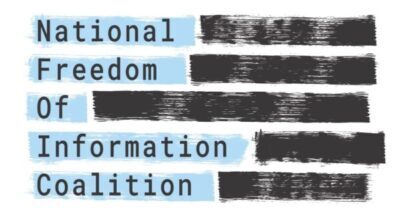It is well under the radar, but another important open government case may be making its way to the U.S. Supreme Court.
If the justices of the Court decide to take it, the case will center on whether records that were indisputably public during court proceedings can be withheld under a tortured interpretation of an investigative and privacy exemption once the court matters are over.
As ridiculous as that sounds when framed that way, that is precisely the stance the U.S. attorney’s office in Colorado and the Justice Department took. And, surprisingly, the Tenth Circuit Court of Appeals sided with them and upheld their withholding of videos and photos used and shown in open court during two trials stemming from a 1999 federal prison murder.
The video, which the government made no attempt to seal or shroud from view during the trials, showed a brutal slaying at the U.S. penitentiary in Florence, Colorado, in which two inmates murdered and mutilated a cellmate.
Prison Legal News (PLN), a scrappy monthly legal journal and news Web site that reports on prisoner rights, overcrowding and safety issues, was denied in its request for copies of the video and autopsy photos. The two inmates who were convicted of the murder were tried separately, and one of the two trials even took place after the magazine had submitted its request for the video under the Freedom of Information Act (FOIA).
The Tenth Circuit Court of Appeals ruled in January, and affirmed on rehearing in March, that the Justice Department was entitled to withhold the gruesome video on grounds that its release amounted to an unwarranted invasion of privacy.
But PLN’s attorneys and their media and open government allies contend that, under the “public domain doctrine,” records that were public in two trials cannot summarily become non-public once the trial is over. That would mirror, they say, what the federal appeals court in the District of Columbia said in a similar case in 1999 and what the Second Circuit said 2006. In fact, they say, it is well-established law that dates back at least 36 years, when the Supreme Court said in Cox Broadcasting v. Cohn, “What transpires in a public courtroom is public property.”
It is anyone’s guess whether the Supreme Court will decide to take this case. But since two other federal judicial circuits have echoed the Cox principle, seeing similar cases differently than the Tenth Circuit did, there is at least a decent chance that they will.
So far, those involved in the case do not include heavy hitters like the New York Times, the Associated Press, CNN, Hearst, ABC or other media or industry giants who are almost always among appellants or amici when important open government cases make their way to the High Court. For reasons that probably have more to do with strategy than ego, those print and broadcast giants, and the industry associations and advocacy groups who often ally with them, like to pick the cases that go up for review.
But PLN, which is no stranger to open government legal battles, could well be on its way to a Supreme Court hearing on this. Should the Supreme Court decide to take the case, it is a good bet PLN will find support from big media companies, industry associations and open government groups on the principle involved, even if they wish it was a less emotional, less controversial set of facts bringing the matter up for review.
Stay tuned.
Ken Bunting
Executive Director, NFOIC
